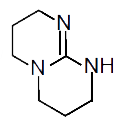For which of the following pairs, the expression pKa+pKb−14=14=0 is true? (a) KOH,HNO3 (b) CH2COOH,CH3COO−
(c ) RNH2,RNH+3 (d) RNH4OH,HCI
correct answer is :
a,b
c,d
b,c
a,d
The correct Answer is:C
To solve the problem, we need to determine which pairs of compounds represent conjugate acid-base pairs, as the expression pKa+pKb=14 holds true for such pairs.
1. Understanding the Expression:
The expression pKa+pKb=14 is valid for conjugate acid-base pairs. This means that if we have an acid (HA) and its conjugate base (A⁻), the relationship holds true.
2. Analyzing Each Pair:
- (a) KOH, HNO₃:
- KOH is a strong base, and HNO₃ is a strong acid. They do not form a conjugate acid-base pair.
- Conclusion: Not a conjugate pair.
- (b) CH₃COOH, CH₃COO⁻:
- CH₃COOH (acetic acid) is a weak acid, and CH₃COO⁻ (acetate ion) is its conjugate base.
- Conclusion: This is a conjugate acid-base pair.
- (c) RNH₂, RNH₃⁺:
- RNH₂ (a weak base) can accept a proton to form RNH₃⁺ (its conjugate acid).
- Conclusion: This is a conjugate acid-base pair.
- (d) RNH₄OH, HCl:
- RNH₄OH is not a typical acid-base pair with HCl. RNH₄OH is a salt that can dissociate into RNH₄⁺ and OH⁻, but HCl is a strong acid and does not form a conjugate pair with RNH₄OH.
- Conclusion: Not a conjugate pair.
3. Final Conclusion:
The pairs that satisfy the condition pKa+pKb=14 are:
- (b) CH₃COOH, CH₃COO⁻
- (c) RNH₂, RNH₃⁺
Answer:
The correct answer is (b) and (c).
The expression pKa+pKb=14 is valid for conjugate acid-base pairs. This means that if we have an acid (HA) and its conjugate base (A⁻), the relationship holds true.
- (a) KOH, HNO₃:
- KOH is a strong base, and HNO₃ is a strong acid. They do not form a conjugate acid-base pair.
- Conclusion: Not a conjugate pair.
- (b) CH₃COOH, CH₃COO⁻:
- CH₃COOH (acetic acid) is a weak acid, and CH₃COO⁻ (acetate ion) is its conjugate base.
- Conclusion: This is a conjugate acid-base pair.
- RNH₂ (a weak base) can accept a proton to form RNH₃⁺ (its conjugate acid).
- Conclusion: This is a conjugate acid-base pair.
- RNH₄OH is not a typical acid-base pair with HCl. RNH₄OH is a salt that can dissociate into RNH₄⁺ and OH⁻, but HCl is a strong acid and does not form a conjugate pair with RNH₄OH.
- Conclusion: Not a conjugate pair.
The pairs that satisfy the condition pKa+pKb=14 are:
- (b) CH₃COOH, CH₃COO⁻
- (c) RNH₂, RNH₃⁺
The correct answer is (b) and (c).
Topper's Solved these Questions
- ICONIC EQUILIBRIUMBOOK - VMC MODULES ENGLISHCHAPTER - ICONIC EQUILIBRIUMEXERCISE - EFFICIENT
50 Videos
- ICONIC EQUILIBRIUMBOOK - VMC MODULES ENGLISHCHAPTER - ICONIC EQUILIBRIUMEXERCISE - IMPECCABLE
50 Videos
- ICONIC EQUILIBRIUMBOOK - VMC MODULES ENGLISHCHAPTER - ICONIC EQUILIBRIUMEXERCISE - IMPECCABLE
50 Videos
- HYDROCARBONSBOOK - VMC MODULES ENGLISHCHAPTER - HYDROCARBONSEXERCISE - JEE Advanced Archive
121 Videos
- INTRODUCTION TO ORGANIC CHEMISTRY BOOK - VMC MODULES ENGLISHCHAPTER - INTRODUCTION TO ORGANIC CHEMISTRY EXERCISE - JEE ADVANCED ARCHIVE
81 Videos
Similar Questions
Which of the following pairs is expected to exhibit H-bonding
(a) CH3CH2OH and CH3OCH3
(b) CH3NH2 and CH3SH
(c ) CH3OH and (CH3)3N .
View Solution(i) F3C−COOH, (ii) CH3COOH, (iii) C6H5COOH, (iv) CH3CH2COOH
Correct order of pKa value is :
View SolutionThe strongest conjugate base is
(a) NO−3
(b)Cl−
(c)SO2−4
(d)CH3COO−
View SolutionFormula CH3−(CH2)14−COOH is :-
View SolutionArrange the following in order of their pKb value
(a) (b) CH3−NH−CH3 (c) H2N−CH=NH
(b) CH3−NH−CH3 (c) H2N−CH=NH
View SolutionArrange the following in order of their pKb value
(a) (b) CH3−NH−CH3 (c) H2N−CH=NH
(b) CH3−NH−CH3 (c) H2N−CH=NH
View SolutionWhich out of each pair is expected to be a stornger acid ?
(a) CH3COOH or HCOOH , (b) CH3COOH or C6H5OH
(c) C6H5COOH or HCOOH , (d) CH2(Cl)COOH or CH2(Br)COOH
View SolutionName the functional groups present in the following compounds.
(a) CH3COCH2CH2CH2CH3 , (b) CH3CH2CH2COOH
(c ) CH3CH2CH2CH2CHO , (d) CH3CH2OH
View SolutionBased on the following equilibrium reactions
HNO2+HF→H2F++NO−2
CH3COOH+HF→F+CH3COOH+2
H2O+CH3COOH→H3O++CH3COO−
Which are the correct order (s) regarding acid strength
View SolutionPick the electrophiles and nucleophiles from the following :
(a) NH3 (b) NO+2 (c) CN− (d) RNH2 (e) SO3 (f) ROH (g) RO− (h) FeCl3
View Solution
